14. In The Mouth Of Madness (1994)
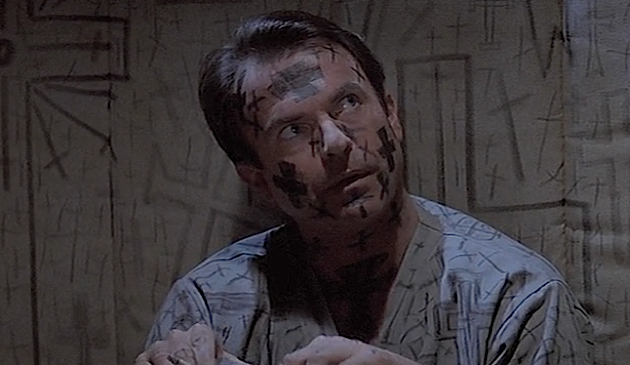
John Carpenter’s ‘In The Mouth Of Madness’ is a ‘Lovecraftian’ tale which blurs the line between fiction and a self-reference in a similar way to how Stephen King has done in stories such as ‘Misery’ and ‘The Dark Tower’.
‘Sutter Cane’, a monumentally successful horror author has gone missing following the release of his latest novel, a book which has been accused of driving its readers insane.
The main hook in the early scenes is the fact that our main character ‘John Trent’, played by Sam Neill, is recounting this tale to a Dr from a cell in a psychiatric hospital.
‘Trent’ is an insurance investigator tasked, along with ‘Cane’s’ editor, Linda Styles, with looking into ‘Cane’s’ disappearance and the recovery of the manuscript for his final and unpublished novel.
The first inkling that these books may truly have a subversive influence on their readers comes when ‘Trent’ is almost killed by a deranged lunatic who tries to attack him before being killed by police, we learn that this was ‘Cane’s’ agent who killed his family and went insane after reading the latest book.
What follows is a strange journey which takes ‘Trent’ and ‘Linda’ to what should be a fictional town named ‘Hobb’s End’, which only exists in the books of ‘Sutter Cane’, and ultimately to a confrontation with ‘Cane’ himself.
The film is filled with disorienting scenes and images straight out of Lovecraft, including obsidian churches and ageless demonic creatures. There are some excellently scary scenes, which stray into ‘Lynchian’ territory on occasion.
The narrative is interesting throughout with some excellent twists. Sam Neill is particularly impressive as ‘Trent’ and as in ‘Event Horizon’ (1997) he seems to really suit these more twisted and horror-centric roles.
This was Carpenter’s third film in what he called his apocalypse trilogy including ‘The Thing’ (1982) and ‘Prince Of Darkness’ (1987), whilst this isn’t in the league ‘The Thing’ it’s a unique and solid film which is well worth your time. Also, look out for ‘Vigo’ from ‘Ghostbusters 2’ (1989) as one of the townsfolk in ‘Hobb’s End’.
15. Castle Freak (1995)
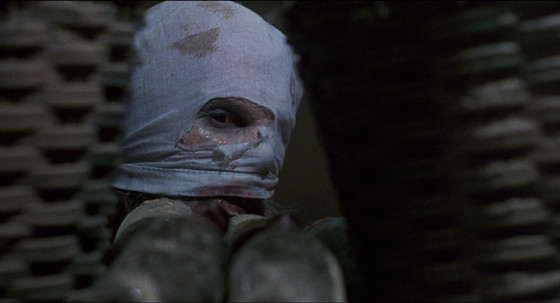
‘Castle Freak’ is the second Lovecraft inspired film in a row on this list, and this one is directed by the Lovecraft adaptation maestro, Stuart Gordon. He teams up once more with the great Jeffrey Combs, as he did with ‘Re-animator’ (1985) and ‘From Beyond’ (1986).
The major difference here is that where those two films were quite tongue-in-cheek and comical in feel, this one is approached far more seriously and is quite disturbing in places.
Combs plays ‘John Reilly’, a recovering alcoholic and grieving father, along with his wife and blind daughter they move to an Italian castle, inherited from ‘John’s’ estranged Aunt, a famed Duchess.
Unbeknownst to them they have also inherited the Duchess’s grotesquely mutilated son whom she has tortured and kept in the castle dungeon for years.
It’s not long before he gets out and meets ‘John’s’ family; his actions and other scenes in the movie illustrate the films theme of repressed sexuality and the violence associated with its sudden release. There is a brutal scene involving a prostitute and the freak, which strays close to exploitation territory and gets quite graphically violent.
The film zips along at a good pace and Gordon makes the most of a clearly limited budget, the freak of the film is a truly crazy and scary creation of effects work and although Combs comes across relatively subdued in his performance for the first half of the movie, don’t worry, he soon starts shifting through the over-dramatic gears into the hysterical performance we know and love.
16. Frailty (2001)
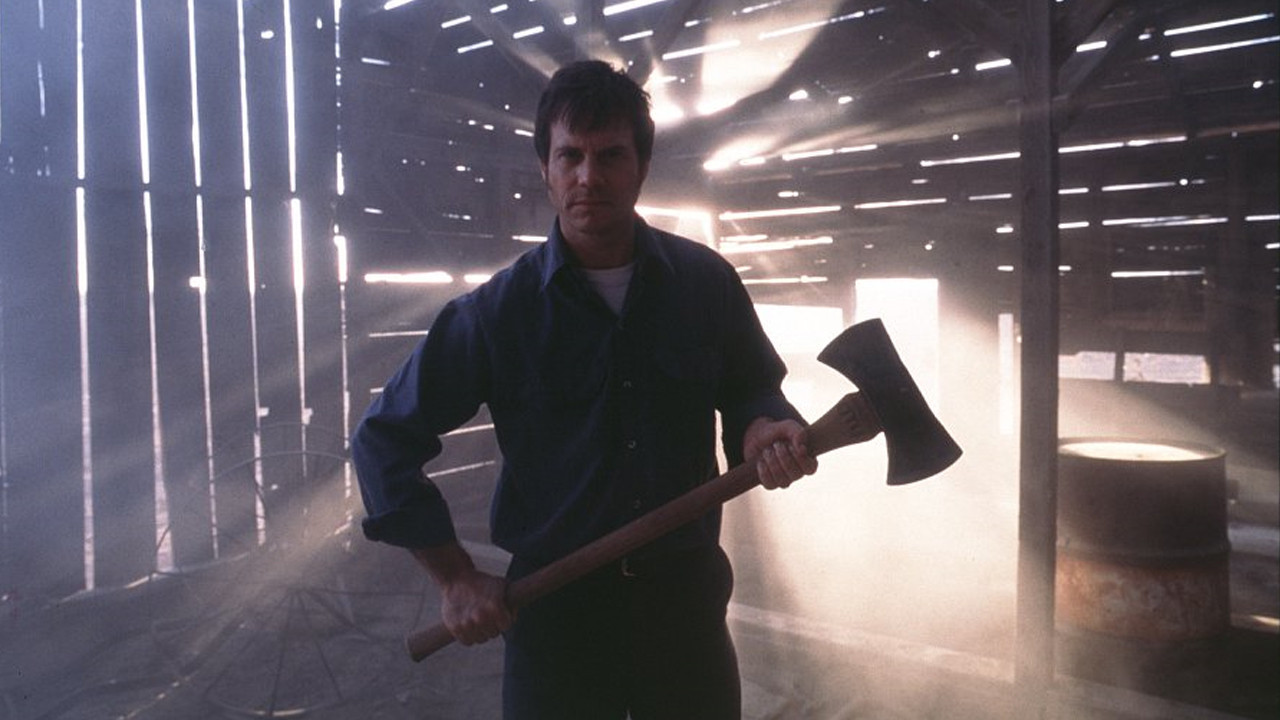
‘Frailty’ is the directorial debut of actor Bill Paxton, he also plays the central character only known as ‘Dad’ and in ‘Frailty’ he has created a taught, terrifying film which dwells with gravity on a number of different questions of faith.
The film opens with Matthew McConaughey’s ‘Fenton Meiks’ arriving in a police station to inform Powers Boothe’s FBI agent that younger brother ‘Adam’ is the wanted ‘God’s Hand’ serial killer.
We are then taken back 20 years or so through flashback to learn of his family’s dark history. Paxton plays the father of the two boys, widowed and caring for both sons on his small Texas town farm.
One night he wakes his sons to tell them with great urgency that he has received a quest from God, who has tasked him with the destruction of demons walking among them in human guise.
‘Fenton’ is understandably dubious but ‘Adam’ eats his father’s words up still being of an age where a parents word is as good as God’s. ‘Dad’ explains God will deliver the weapons needed to carry out this quest and the names of those demons targeted for destruction, this happens through further epiphanies and the quest ensues.
Saying much more on the narrative would surely lessen its impact; it’s a well handled debut from Paxton who relies more on the horrifying aspects of his characters belief and determination than any explicit violence, the writing is masterful, throwing twists and turns into the narrative with great effect.
Performances all round are excellent and the story presents difficult questions about the ideologies we project on to children as well as their faith in us as parents. Most importantly of all though there is a huge question mark over whether Paxton is in fact insane or truly chosen by some higher power.
17. Shutter (2004)
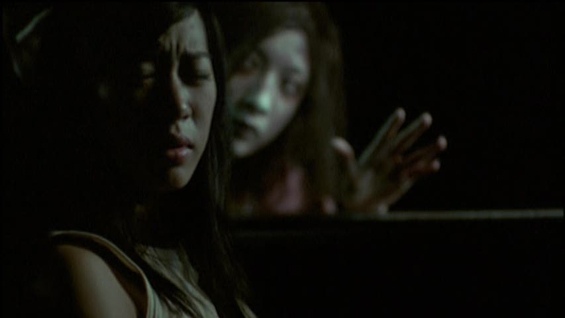
Asian horror movies about creepy vengeful ghost girls are nothing new and ‘Shutter’ a film of Thai origin doesn’t bring anything different in respect of this common horror convention, what it does bring though is an effective use of this and other horror tropes to elevate the quality of the scares to a new bar for Asian horror.
The premise is simple enough, ‘Tun’, a photographer and his girlfriend ‘Jane’ run over a woman in the road one evening and noting that she is lying quite still in the road they decide to leave the scene and not look back.
Later they begin to experience haunting visions and notice shadows and unexplained presences in many of ‘Tun’s’ photographs, he quickly comes to the realisation that this is the ghost of his former girlfriend who has returned from the dead for vengeance on ‘Tun’ and his friends for a terrible sexual assault visited on her by as ‘Tun’ cowardly photographed her ordeal. These hauntings escalate throughout the film as ‘Tun’ is forced to face up to his mistakes of the past.
What sets this film apart is the handling of this narrative and the well-executed horror aspects of the story. The use of photography is effective and often quite chilling, where there are jump scares which would usually prove the downfall of a horror like this, they are used well and never come across as too contrived.
The cast and writing is all excellent and the ending of the film is again well executed and quite affecting, all round the story is surprisingly tragic and it certainly adds a needed emotional depth to the film. Don’t watch the 2009 remake, go and seek this truly original Thai horror out as soon as possible.
18. Inside/A I’nteriuer (2007)
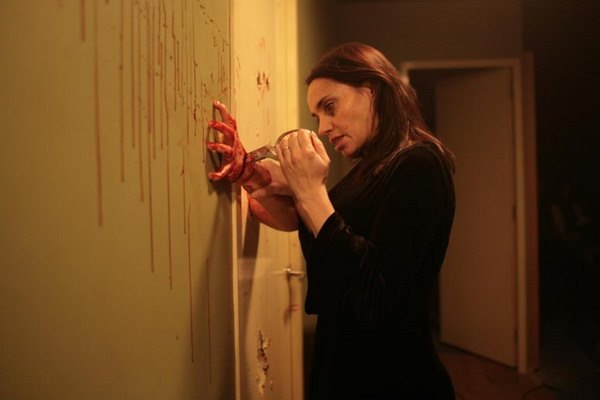
The French new wave of extreme horror cinema has pushed the extremes of violence and gore to new levels, not just in terms of the visuals but also in regard to the intensity and savagery of the acts of violence.
This film, ‘Inside’, perhaps pushes the viewer further in these respects than any other contemporary horror, French or otherwise. That its reputation still does not seem to precede it in terms of the uninitiated who have not yet experienced it is a crime and proof of its classification as underappreciated.
Right from the opening scene involving a brutal car crash in which our protagonist, ‘Sarah’s’ husband is killed, we are told exactly where this film is going to take us when the crash is depicted from the perspective of an unborn baby.
Following this we learn the still pregnant ‘Sarah’ is now reclusive to the point of spending Christmas eve alone in her home. She isn’t alone for long though, a mysterious and unnamed woman arrives and very quickly shows hostile intentions toward ‘Sarah’.
She disappears temporarily and the police come to check the immediate area, she then returns and reveals it is ‘Sarah’s’ baby she wants, at any cost. What follows is an unflinchingly brutal experience for ‘Sarah’ and also for the audience. ‘Sarah’ doesn’t give up easily and is believably resilient given what is at stake.
The mystery woman is an unstoppable well of anger and determination, the violence itself is treat with respect by the director in that it is never made light of nor turned away from, although its roots are clearly in the slasher genre, there is no pay off with the kill scenes here and every second is an ordeal right through to the absolutely shocking ending.
The film is more an experience than entertainment and some viewers may well not make it right through, if you do though this one will stay with you for some time.
19. Lake Mungo (2008)
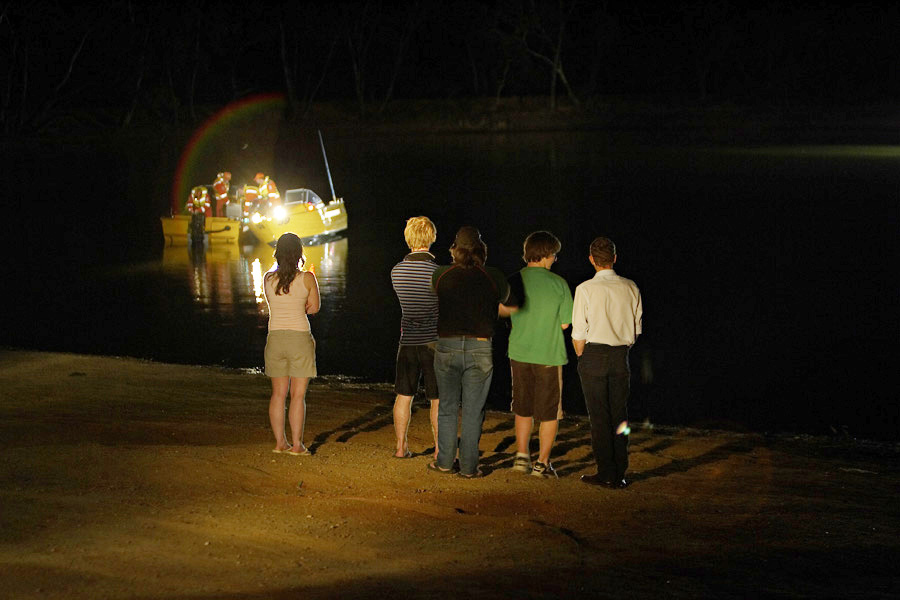
Australia and New Zealand have long had a great horror industry, the 80s and 90s gave us classics that have gone down in horror history such as ‘Braindead’ (1992), ‘Bad Taste’ (1987) (both early Peter Jackson classics) and ‘Razorback’ (1984).
More recently there have been more high profile entries like ‘The Babadook’ (2014) and ‘Wolf Creek’ (2005), look under the surface though and you find a rich vein of amazingly under-viewed horror such as Snowtown (2011), Housebound (2014) and this particular movie (not to mention the next).
‘Lake Mungo’ is a mix of documentary style interview and found/home video footage, it concerns the tragic death of ‘Alice Palmer’ and her family’s struggle to move on with their lives and come to terms with the loss of their daughter.
This is made more difficult by the fact that there are unexplained events in and around the family home which might suggest ‘Alice’ hasn’t gone completely. The family hire a psychic who tries to help them investigate and understand what is happening and why ‘Alice’ met such a tragic end.
As the story unfolds it reveals shocking secrets about ‘Alice’s’ life leading up to her death and we learn the connection to the ‘Lake Mungo’ of the title. The film is paced deliberately slowly and this suits both the documentary style and the gradual unfolding of the story via the interviews with family and friends of ‘Alice’, this also adds weight to the revelations throughout the film.
It’s a clever film, which constantly makes the viewer question what is really happening; its mixture of paranormal and the theme of grief and how different people cope with the loss of a loved one is well handled and the use of photography and home video adds a very chilling dimension.
20. The Loved Ones (2009)
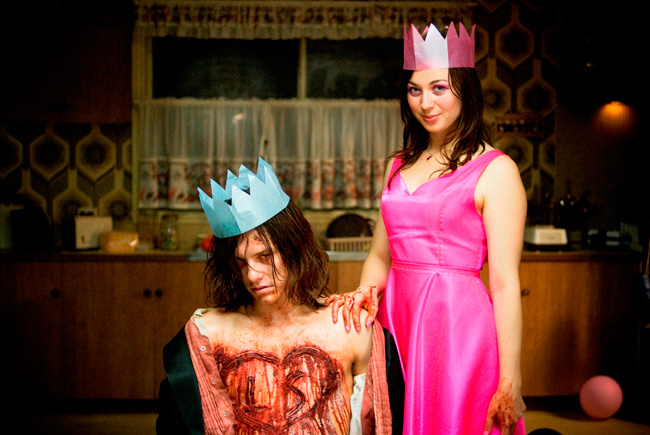
As with the previous entry this is an incredible example of Australian horror. ‘The Loved Ones’ doesn’t have a large cast, or a well known one. But, it does have huge ambitions and it delivers so well on those.
The plot is simple, crazy horror family stuff; ‘Lola’, a social outcast, asks ‘Brent’, who seems to represent the cool, modern and popular side of Goth culture, to the school dance. ‘Brent’ turns ‘Lola’ down to go with his actual girlfriend which should really be an acceptable excuse.
The film doesn’t take long to get down to the action following this simple set up, ‘Brent’ is succinctly kidnapped by ‘Lola’s’ father and awakes in their house tied to a dining room chair where he is subjected to ‘Lola’s’ efforts to create her ideal date.
What follows is an incredible barrage of violence and disturbing scenes reflecting the level of brutality common in the new French extremism sub-genre, some may call it torture-porn but it owes more to ‘The People Under The Stairs’ (1991) sense of blackly comic crazy than to Hostel’s (2005) grim and gritty brutality.
The setting bursts with colour and light and ‘Lola’ carries out ‘Brent’s’ torturous ordeal in a brilliant pink dress and enthusiastic level of happiness, these elements coupled with ‘Lola’ and her fathers level of insanity gives proceedings a bizarre tongue in cheek feel.
Turning to ‘Lola’, a diminutive girl with an innocent face, she is perhaps one of horror’s most unhinged villains, there’s no blank faced killer here but ‘Lola’ is just as relentless as any ‘Myers’ or ‘Voorhees’ incarnation. Her father has a dedication to his daughter, which hints at incest and unhealthy obsession and his performance is ridiculously uncomfortable in places.
Throughout this ordeal we find out just how dark the family secrets get and that ‘Brent’ has a surprisingly inhuman resilience to torture.
It’s frenetically paced and never lets up for a second; there’s an interesting entwinement involving some of the support characters which offer further entertainment with ‘Brent’s’ friends date night bringing some laughs. But, the main event here is ‘Lola’ and her commitment to her perfect night.
Author Bio: Paul Steventon is a Project Manager from North East England, he is a self confessed film addict and loves cult cinema, horror and standing up for underappreciated b-movies. His main hobbies are buying films and vinyl; trying to convince his wife Emma to watch all the weird cinema he loves and proving to his kids that the 80s were great.